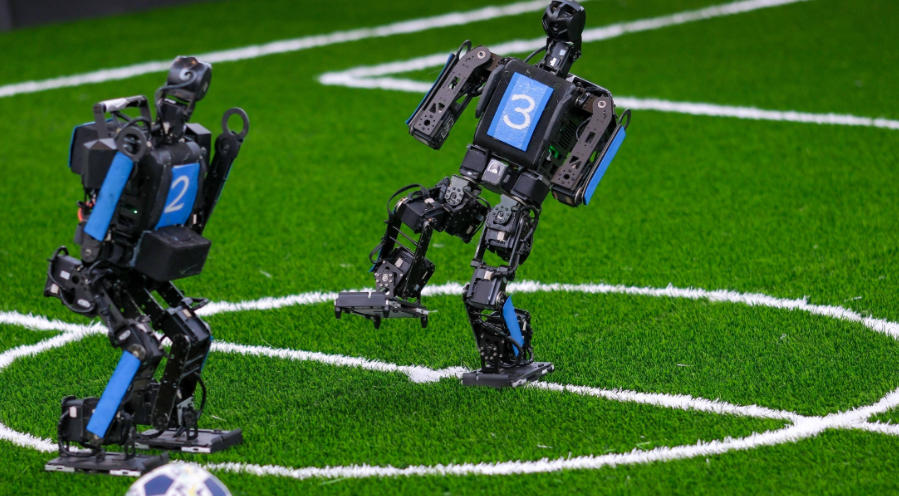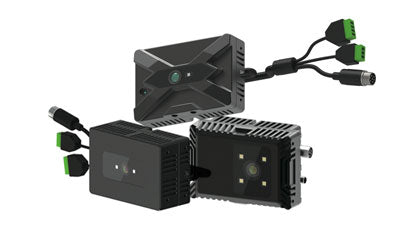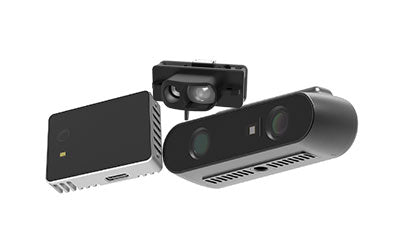Education & Research:How ToF Sensors Boost Robotics Competitions & R&D

How Are ToF Sensors Used in University Robotics and Research Projects?
With the rapid development of smart education and research, universities and research institutions increasingly demand low-cost, real-time, high-precision 3D depth sensing technologies. As an advanced spatial perception solution, TOF (Time-of-Flight) (ToF) sensors play a crucial role in robotics competitions, drone obstacle avoidance, and SLAM (Simultaneous Localization and Mapping) research. They not only enhance the technological content of educational experiments but also foster research innovation and interdisciplinary collaboration.
The Demand for Low-Cost 3D Depth Sensing in Education and Research
In university labs and research centers, educators and researchers aim to:
-
Quickly grasp 3D spatial perception: Allow students to understand principles of robot navigation, obstacle avoidance, and motion planning through hands-on experience
-
Reduce experiment costs: Compared to high-end LiDAR systems, ToF sensors provide a cost-effective 3D depth sensing solution
-
Enhance real-time interaction: Students and researchers can collect 3D data in real-time, enabling immediate feedback
As a result, 3D ToF sensors, 3D depth cameras, and ToF 3D camera modules are increasingly popular in educational and research applications.
What is a Time-of-Flight (ToF) Sensor?
Time-of-Flight (ToF) sensors measure the time it takes for a light pulse to travel from the emitter to the target and back, calculating object distances to achieve 3D depth sensing.
Working principle:
-
Light pulse emission: ToF sensors typically emit near-infrared light (e.g., VCSEL laser) toward the target.
-
Pulse reflection: Light reflects off the object and is captured by the receiver (e.g., SPAD photodiode).
-
Flight time measurement: The sensor calculates the Time of Flight of the light pulse.
-
Depth calculation: Using the formula
the sensor derives the precise distance of the object, enabling accurate 3D depth perception.
Key Features:
-
High real-time performance: Generates high-frame-rate depth maps for dynamic scene perception
-
Short-range accuracy: Ideal for distances from 0.1 meters to several meters
-
Compact and low-power: Suitable for smartphones, drones, robots, and IoT devices
-
Robust in multiple environments: Works reliably under low-light or complex lighting conditions
Typical Applications:
-
3D facial recognition, background blur, and gesture control in smartphones
-
Obstacle avoidance and path planning for robots and drones
-
Spatial perception and automation in smart home devices
-
3D modeling and augmented reality in AR/VR devices
ToF sensors allow devices to 'see' depth, transforming 2D plane perception into 3D spatial awareness.
Typical Applications of ToF in Robotics Competitions and Research (Extended Version)
Time-of-Flight (ToF) sensors calculate distance by measuring the round-trip time of light pulses, offering high-precision, low-latency, short-range, real-time measurements. With low power consumption and small form factor, ToF is particularly suitable for university labs, robotics competitions, and drone research projects requiring cost-effective 3D perception.
1. Robotics Competitions
In university robotics competitions such as RoboCup, FIRST Robotics, and VEX Robotics, ToF sensors have become essential for enabling intelligent perception and autonomous decision-making. Typical applications include:
-
Real-time obstacle detection and avoidance
ToF sensors generate high-frame-rate 3D depth maps with millimeter-level distance measurement. Robots can perceive obstacles in real-time and calculate optimal paths for dynamic avoidance and autonomous navigation.For example, in RoboCup soccer competitions, robots can use ToF sensors to detect teammates and opponents, quickly adjusting movement trajectories to improve performance.
-
Precise positioning and posture control
3D point cloud data from ToF sensors allow robots to accurately detect track boundaries, target objects, and motion paths. Combined with IMUs and SLAM algorithms, ToF provides reliable spatial localization, supporting complex tasks like object grasping, throwing, or trajectory following. -
Multi-robot collaboration and environment perception
Multi-robot systems can share real-time depth data via ToF, enabling collaborative planning and task allocation. For instance, in indoor search-and-rescue competitions, ToF helps robots navigate tight spaces without collisions while supporting environment modeling and providing accurate 3D information for team coordination.
2. Drones and SLAM Research
Drone autonomous flight and SLAM research require high-precision, low-latency 3D depth data. ToF sensors provide several advantages:
-
Lightweight and low-power design
Compared to high-end LiDAR, ToF modules are small and lightweight, ideal for consumer or research drones, preserving flight time and maneuverability. -
Fast depth measurement with millimeter-level precision
ToF offers real-time, high-precision distance measurements, generating continuous 3D point clouds or depth maps, suitable for SLAM algorithms to map and localize environments, assisting drones with obstacle avoidance, path planning, and target tracking. -
Adaptability to complex environments
Near-infrared pulse technology enables ToF sensors to perform well in low-light or indoor environments. Even in uneven lighting or semi-transparent object conditions, ToF delivers stable depth data for research and drone competitions.
By combining 3D ToF sensor modules and ToF depth cameras with SLAM, path planning, and AI algorithms, university research teams can:
-
Achieve autonomous obstacle avoidance and precise navigation
-
Build 3D maps of indoor or semi-outdoor environments
-
Conduct dynamic trajectory optimization and multi-drone collaboration experiments
-
Support advanced spatial perception training in robotics and drones for education, research, and competitions
In summary, ToF sensors provide a low-cost, high-precision 3D depth sensing solution for robotics competitions and research experiments. They create a hands-on spatial perception platform for students and researchers, fostering the next generation of innovators in artificial intelligence and robotics.
Teaching & Laboratory Selection Guidelines for ToF Technology
In educational and research environments, selecting ToF devices requires consideration beyond hardware performance, including ecosystem support, programmability, and learning curve. Time-of-Flight (ToF) sensors emit near-infrared light pulses and measure the round-trip flight time of light to generate high-precision 3D depth maps or point clouds, providing students and researchers with intuitive spatial perception data.
1. Hardware Selection
When choosing ToF modules, consider the following criteria:
-
Measurement range (ToF sensor range): Select short-range ToF (tens of centimeters to a few meters) or medium-to-long-range modules based on the experiment or competition environment
-
Depth resolution (ToF sensor resolution / 3D depth sensing): Higher resolution improves SLAM accuracy and gesture recognition precision
-
Frame rate (ToF frame rate / real-time depth sensing): High frame rates support real-time obstacle avoidance and motion capture in dynamic environments
-
Interface & compatibility: USB, I2C, SPI, or ROS driver support enables rapid development and data acquisition
Common modules include:
-
STMicroelectronics ToF Sensors: Low-power, short-range 3D depth modules suitable for robotics competitions and teaching experiments
-
Infineon REAL3 3D ToF Camera Modules: High-precision depth sensing ideal for SLAM research and drone obstacle avoidance
-
TI ToF Sensor Modules: Supports multiple development platforms, suitable for university research and educational labs
2. Software Support
Education and research rely not only on hardware but also on robust software and development tools:
-
SDK support: Modules with documentation and example code allow rapid onboarding
-
Cross-platform compatibility: Supports ROS, MATLAB, Python, or C++ for depth data processing
-
Experimental & simulation resources: Compatible with open-source SLAM, computer vision, and robotics libraries for quick lab setup
3. Educational Materials & Experimental Resources
Universities can leverage the following resources to reduce the learning curve for ToF experiments:
-
Open-source textbooks & courses: Covering 3D perception, SLAM, robotics vision, and HMI experiments
-
Experimental kits & sample code: APIs included with ToF modules allow students to perform depth measurement, obstacle detection, and gesture recognition experiments quickly
-
Datasets & simulation environments: Simulate ToF data in complex scenarios, helping students understand noise, occlusion, and calibration errors
Research Challenges: Noise, Calibration Accuracy, and Synchronization
Although ToF technology is widely applied in education and research, several technical challenges require attention:
-
Data noise (ToF sensor noise / 3D depth noise)
Ambient light interference, reflective surfaces, and transparent objects can cause inaccurate depth readings. Researchers can use temporal filtering, spatial filtering, and depth data fusion algorithms to improve stability. -
Calibration accuracy (ToF calibration / 3D sensor alignment)
Multi-sensor fusion (e.g., ToF + RGB + IMU) requires precise calibration. Errors can lead to SLAM map drift or object recognition failure. Regular calibration and algorithm optimization are necessary. -
Synchronization issues (Time synchronization / ToF multi-sensor sync)
For multi-device data acquisition, time synchronization is critical for SLAM, multi-robot collaboration, and dynamic motion capture. Hardware triggers or software timestamps ensure consistent data streams.
Through algorithm optimization, filtering, error compensation, and multi-sensor fusion strategies, research teams can significantly enhance data reliability and accuracy, maximizing ToF’s value in robotics competitions, drone navigation, SLAM experiments, and educational research projects.
Recommendations for Universities and Research Institutions
-
Project Integration: Incorporate ToF technology into robotics competitions, drone research, and 3D perception courses
-
Interdisciplinary Collaboration: Combine computer vision, AI, control engineering, and electronics for comprehensive experiments
-
Open Resource Sharing: Utilize open-source SDKs, 3D point cloud datasets, and experimental case studies to lower development barriers and improve research efficiency
By strategic planning and resource integration, universities can fully leverage the advantages of ToF technology in education and research.
Outlook: Popularization of 3D Spatial Perception in STEAM Education
With the growth of STEAM education, AI laboratories, and intelligent robotics courses, 3D spatial perception is becoming a key component of learning and research. ToF sensors not only help students understand depth and spatial relationships but also enhance innovation and hands-on skills. Future trends include:
-
3D ToF cameras becoming standard laboratory equipment
-
Robotics competitions widely adopting low-cost 3D perception modules
-
University research increasingly relying on ToF + SLAM + AI algorithm integration
By introducing ToF technology, education and research will enter a low-cost, high-efficiency, and scalable era of 3D depth sensing.
Synexens 3D Of RGBD ToF Depth Sensor_CS30
Our professional technical team specializing in 3D camera ranging is ready to assist you at any time. Whether you encounter any issues with your TOF camera after purchase or need clarification on TOF technology, feel free to contact us anytime. We are committed to providing high-quality technical after-sales service and user experience, ensuring your peace of mind in both shopping and using our products.






